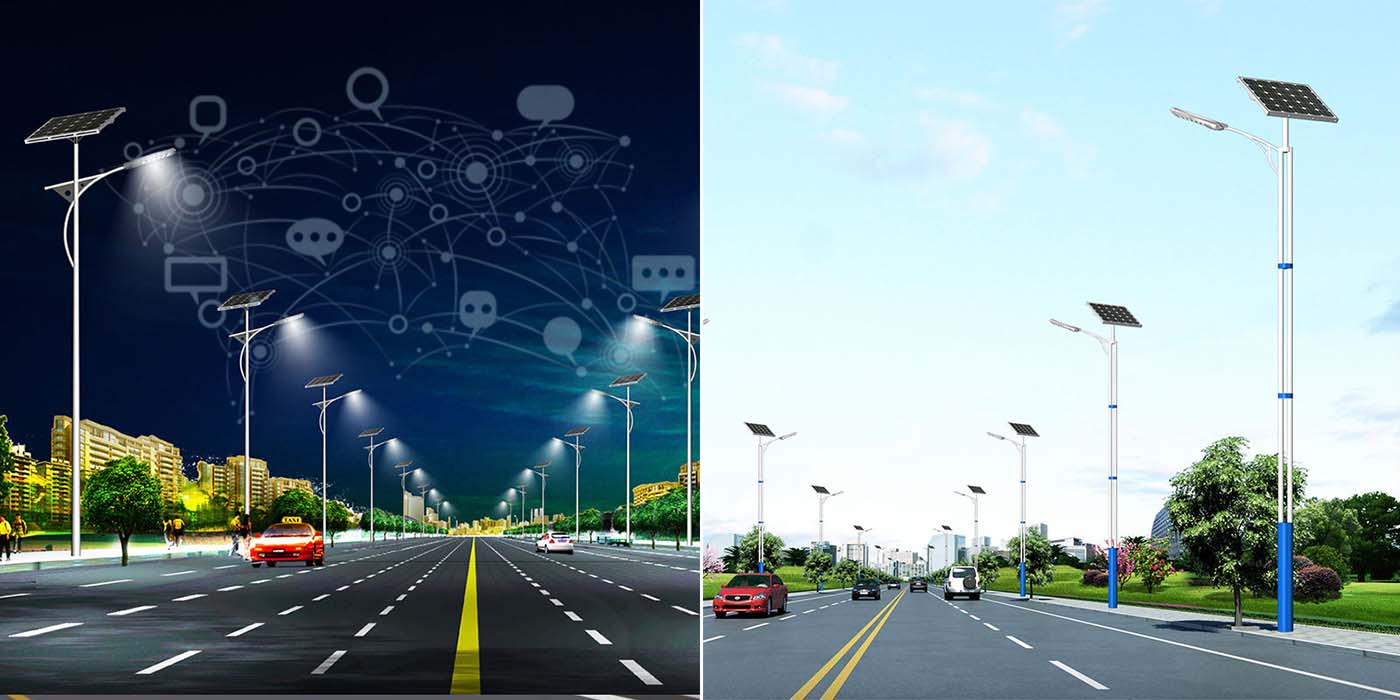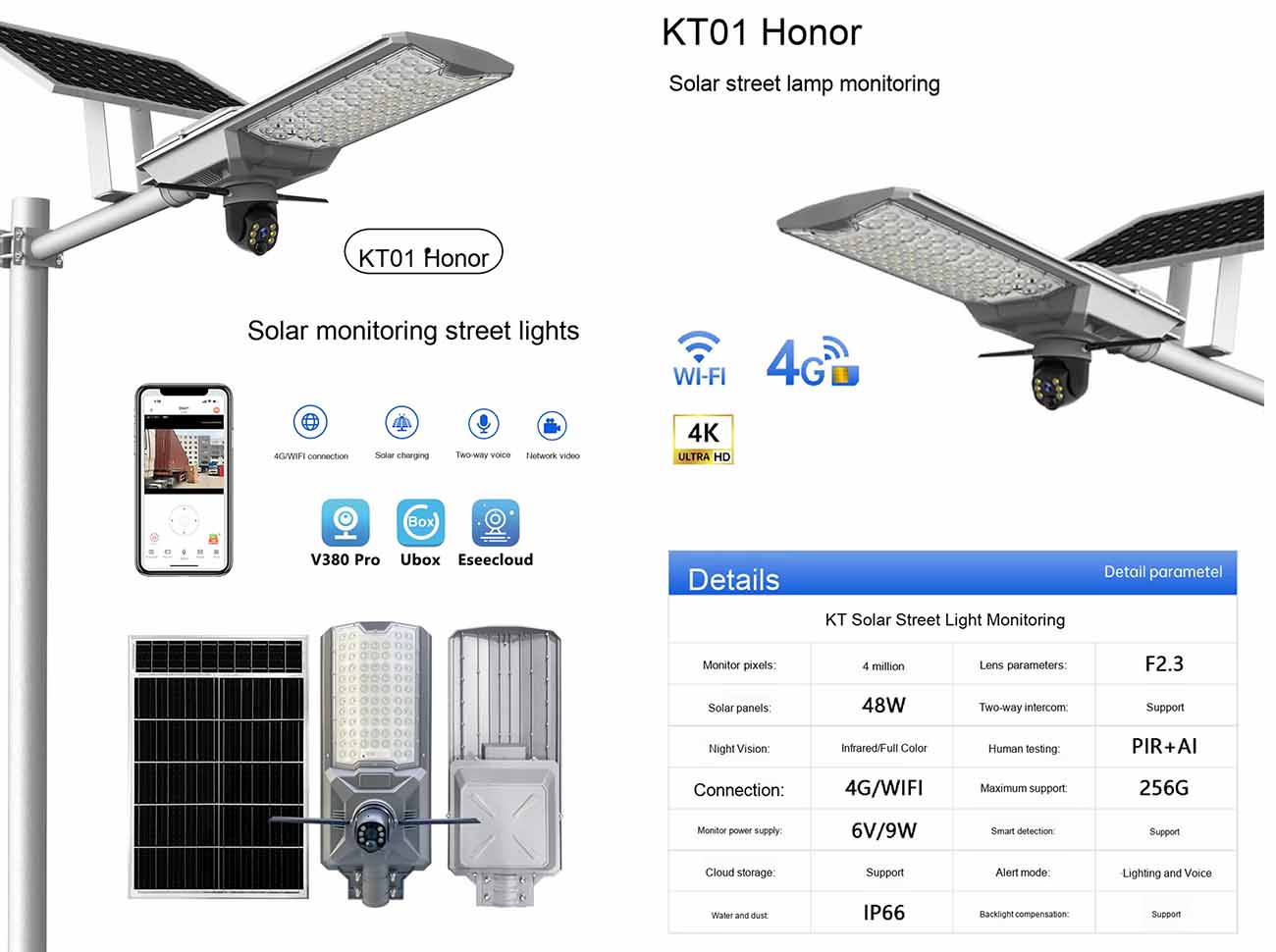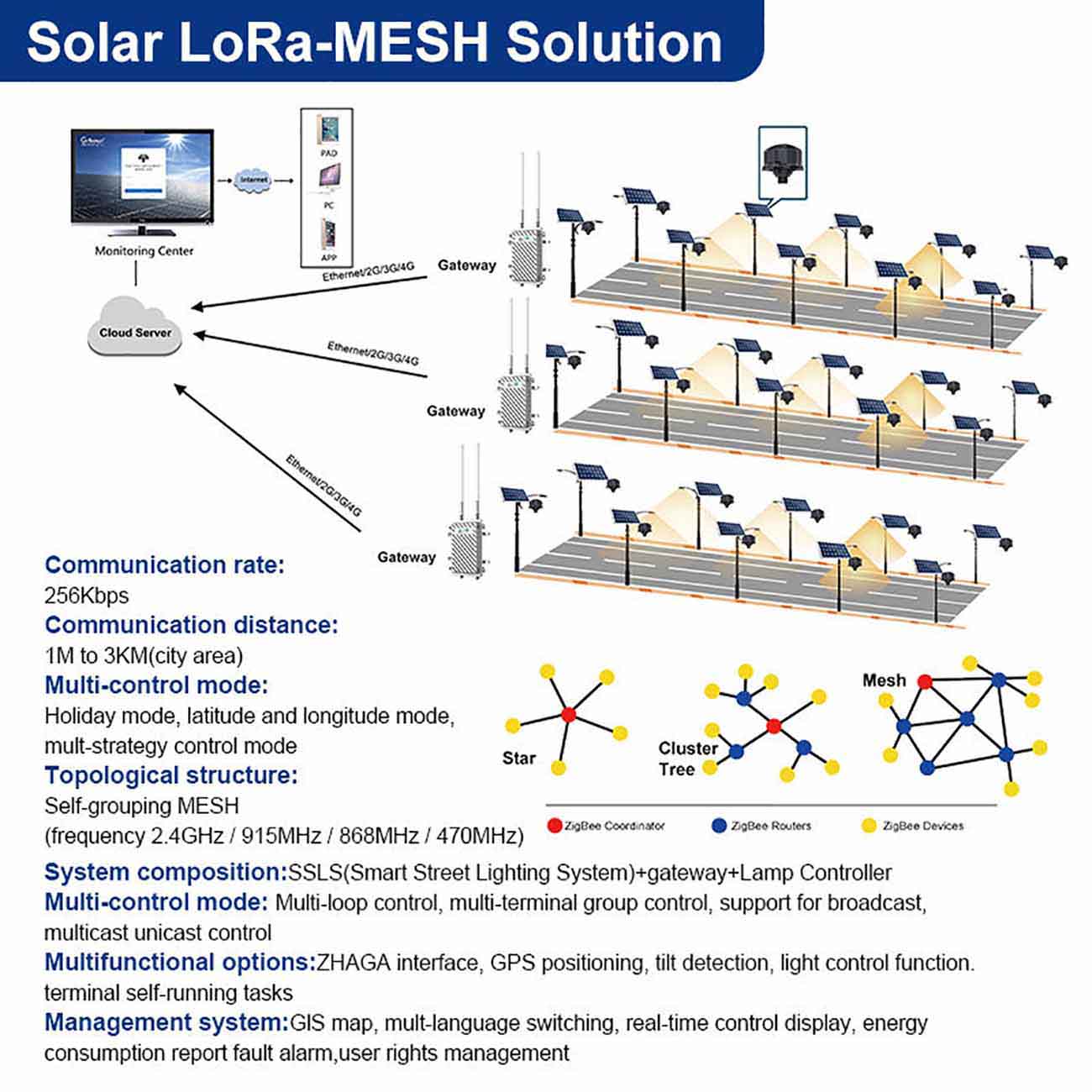The integration of IoT technology into solar lights has revolutionized urban and rural lighting systems, and IoT solar street lights that can be controlled via smartphones are emerging as a key part of smart city infrastructure.
Operational Mechanism: How Smartphone Control Works
Hardware Foundation: Each IoT solar street light is equipped with core components such as a smart control module, sensors, high-efficiency solar panels, and energy storage batteries. The smart control module, the "brain" of the light, integrates communication modules supporting NB-IoT, LoRa, or 4G/5G. Sensors collect real-time data including ambient light intensity, traffic flow, battery power, and the light’s working status. For example, light sensors detect dusk and dawn, while motion sensors identify pedestrian or vehicle activity.
Data Transmission and Cloud Connection: The collected data is sent to a cloud management platform through wireless communication networks. This platform processes and analyzes the data uniformly, establishing a data link between the street lights and smartphones.

Smartphone Terminal Interaction: Users install a dedicated App or use a mini-program. After encrypted access to the cloud platform, they can receive real-time data fed back by the street lights. When users send commands (like adjusting brightness or setting switching times) via the smartphone, the commands are transmitted through the cloud to the street light’s control module, which then executes the operations.
Core Advantages Driving Their Popularity
Extreme Energy Efficiency: Unlike traditional street lights with fixed brightness and switching times, IoT solar lights achieve dual energy savings. They rely on solar energy to avoid consuming grid electricity, and smartphone-controlled intelligent dimming optimizes energy use. For example, brightness can be reduced to 30% of the maximum during late-night low-traffic periods and instantly boosted when sensors detect passing pedestrians or vehicles. Relevant studies show they save 30%-50% more energy compared to conventional fixed-brightness solar street lights.
Efficient Remote Management: Smartphone control eliminates the need for manual on-site inspections of traditional street lights. Managers can check the power, lighting duration, and fault status of any street light in real time on their phones. If a light malfunctions, the system automatically sends an alert to the phone and locates the fault, reducing maintenance response time from days to hours.

Strong Flexibility and Emergency Adaptability: These lights can be flexibly adjusted via smartphones based on scenarios. In high-crime areas or during emergencies like traffic accidents, managers can instantly increase brightness with one tap. In regions with extreme weather such as continuous rain, they can pre-shorten lighting duration or lower brightness through the phone to ensure stable operation.
Low Overall Costs: Although the initial investment in IoT solar lights is slightly higher, they save costs in multiple ways. Solar power cuts electricity bills; remote management reduces labor costs for inspections; and intelligent monitoring extends equipment lifespan by avoiding overcharging or over-discharging of batteries, ultimately reducing long-term operation and maintenance costs.

Typical Application Cases Worldwide
Costa Rica’s Alpha Series Project: Recently, Costa Rica collaborated with technology companies to deploy Alpha Series IoT solar street lights. These lights use AI and IoT technologies, allowing municipal authorities to control them via smartphones. They dynamically adjust brightness according to ambient light and traffic flow, feature anti-glare designs to reduce light pollution, and their built-in sensors also collect environmental data like temperature and air quality to assist urban planning.
Los Angeles’ Intelligent Lighting Transformation: Some urban areas in Los Angeles have installed IoT solar street light systems. The system adjusts brightness based on real-time traffic flow collected by sensors, and managers monitor and control all lights via mobile terminals. After deployment, the city’s street light energy consumption dropped by about 40%, and maintenance efficiency increased by 35%.
Domestic Rural and Small-City Promotion: In China, many rural and third- and fourth-tier cities have launched IoT solar street light projects amid smart city construction. For example, in remote rural areas, villagers and town management can use their phones to control street lights along country roads, and local governments can uniformly manage lighting across the region through mobile terminals, solving the problem of difficult maintenance of rural street lights.

Current Challenges and Future Development Trends
Existing Challenges: Firstly, there is a lack of unified standards. Different manufacturers use different communication protocols and data formats, making it difficult for systems to interconnect, which hinders large-scale deployment.
Secondly, extreme environments affect stability—high temperatures, heavy humidity, and strong electromagnetic interference can reduce sensor accuracy and disrupt communication. Finally, cost and supply chain risks persist.
Although large-scale production has lowered costs, high-performance chips and battery materials still face supply uncertainties, and the cost of sodium-ion batteries, a potential alternative, needs to be reduced by 30% for large-scale application.
Future Trends: Technically, the integration of AI and edge computing will be strengthened. Future street lights will be able to analyze traffic and environmental data locally to achieve faster response to brightness adjustments.

In terms of functionality, IoT solar lights will become part of the smart city sensing network, integrating functions such as air quality monitoring and video surveillance. Policy-wise, with the continuous improvement of relevant national standards and increased subsidies for green energy, the market share of IoT solar lights is expected to further rise. It is predicted that by 2030, the proportion of smart street lights in China will reach 35%.
laisser un message
Numériser vers Wechat :

Numériser vers WhatsApp :
